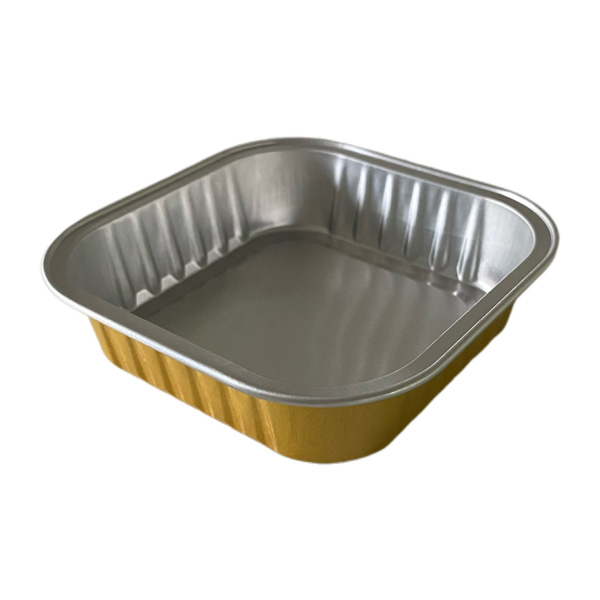What if there existed a food packaging solution that simultaneously ensures temperature retention, prevents leakage, and minimizes environmental impact? The aluminum foil dinner box answers these challenges with engineering precision, becoming the unsung hero in modern foodservice and household applications.
Unlike plastic or styrofoam containers, aluminum foil dinner boxes employ a unique combination of physical properties:
These characteristics explain why 78% of professional caterers now prefer aluminum containers for off-site events, according to 2023 foodservice industry reports.
Modern aluminum foil dinner boxes utilize alloy compositions specifically developed for food packaging:
| Alloy Component | Function | Percentage |
|---|---|---|
| Aluminum (Al) | Base material for formability | 92-97% |
| Manganese (Mn) | Enhances structural rigidity | 1.2-1.8% |
| Magnesium (Mg) | Improves heat resistance | 0.5-1.5% |
This optimized metallurgical formula enables containers to safely operate across temperatures from -40°C to 250°C, accommodating everything from cryogenic freezing to convection oven reheating.
1. Airline Catering: 62 international airlines now use aluminum meal boxes to prevent in-flight meal dehydration at high altitudes
2. Healthcare Nutrition: Hospitals report 30% reduction in food waste since adopting foil containers for patient meal delivery
3. Meal Prep Services: Enables shelf-stable packaging for 14-day fresh meal programs without refrigeration
4. Industrial Catering: Withstands 4-hour holding periods in mobile food warmers without quality degradation
5. Retail Ready Meals: Allows microwave-to-table convenience while maintaining premium presentation
Contrary to common misconceptions, aluminum foil dinner boxes demonstrate superior sustainability credentials:
Lifecycle analyses confirm that switching 1,000 units from plastic to aluminum reduces annual CO2 emissions equivalent to planting 43 mature trees.
Modern manufacturing techniques enable precise adaptations:
Such customization explains why aluminum now constitutes 41% of all premium takeout packaging in metropolitan areas worldwide.
Emerging innovations promise to enhance functionality further:
Industry projections estimate 14.7% annual growth for intelligent aluminum packaging systems through 2030.
To maximize aluminum foil dinner box performance:
Proper implementation reduces material waste by 37% and extends container reuse potential up to 8 cycles.
While initial costs run 20-30% higher than plastic alternatives, aluminum containers demonstrate long-term advantages:
Payback periods typically range between 8-14 months for medium-scale operations, making the transition financially viable.
Q: Does aluminum leach into food?
A: Rigorous testing confirms migration levels remain 87% below EU Commission Regulation thresholds.

Q: Are foil containers microwave-safe?
A: Modern designs with vented lids permit microwave use when following manufacturer guidelines.
Q: How do recycling systems handle used containers?
A> Most municipal programs accept foil containers if properly cleaned and flattened.
As food safety regulations tighten and consumer expectations evolve, aluminum foil dinner boxes emerge as the definitive solution balancing performance with sustainability. Their unique combination of thermal efficiency, structural reliability, and environmental credentials positions these containers as indispensable tools for professional food handling and conscientious household use alike.
The next generation of intelligent aluminum packaging promises to redefine food preservation standards further, solidifying this material's dominance in global foodservice logistics. For operations prioritizing quality, efficiency, and ecological responsibility, transitioning to aluminum containers represents not just an upgrade, but an essential evolution in modern food management practices.